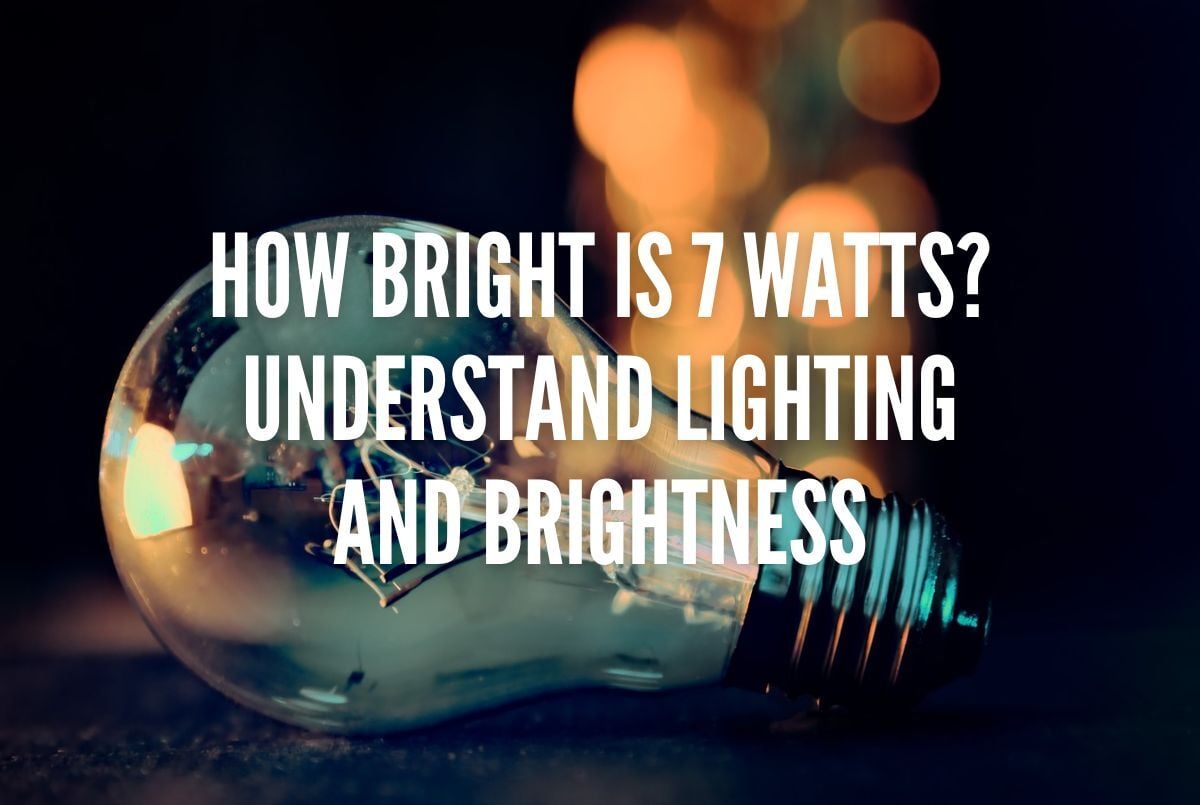


Doing some research, specifically keyword research, I came across this question: How bright is 7 watts? This made me sit back and think. If people are asking how bright 7 Watts is, then you could replace “7” with any arbitrary number, and the question could be asked in an infinite number of ways. But the explanation can also be done in just as many ways. Instead of diving into endless possibilities, I wanted to simplify this topic for someone trying to answer this question. So, let’s break it down.
First, it’s important to understand what a watt actually measures. A watt is a unit of energy, specifically the rate at which energy is used. So, when someone asks, “How bright is 7 watts?” they’re essentially asking how much light a device using 7 watts of energy will produce. But here’s the catch: watts alone don’t tell you much about brightness.
Why? Because 7 watts of what? LED? Incandescent? Compact fluorescent? Different lighting technologies use energy differently, and the amount of light they produce can vary greatly even at the same wattage. For example, a 7-watt LED bulb will produce much more light than a 7-watt incandescent bulb because LEDs are far more energy-efficient. So, the wattage alone isn’t the best indicator of brightness.
Instead of focusing on watts, we need to look at lumens. Lumens are the unit of measurement for the total amount of visible light emitted by a source. In simpler terms, lumens tell you how bright a light is. The higher the lumen count, the brighter the light.
For example:
This difference is because LEDs convert more of the energy they use into light, while incandescent bulbs waste a lot of energy as heat. So, when comparing brightness, always check the lumen output, not just the wattage.

Another factor that affects brightness is light distribution. This is especially important with LEDs. The way light is distributed from the source can make a big difference in how bright a space feels.
A wide distribution pattern (like a floodlight) spreads light over a larger area but may appear less intense in any one spot. This is because the light pattern is designed to cover a large area and spreads the light out as evenly as possible.
A narrow distribution pattern (like a spotlight) concentrates light in a smaller area, making it appear brighter in that specific spot. This is because the light pattern is more focused on a smaller area and designed to be projected further away from the light source.
Understanding the distribution pattern of a light source can help you choose the right type of light for your needs. If you’re lighting up a large area, like a parking lot, a wide distribution might be better; whereas, along a pathway, a more focused type 2 distribution pattern would be used.
The same concept is used for sign lighting projects. If you’re highlighting a specific object or area from a distance, a narrow distribution could be more effective, but when you are close up, the wider distribution patterns are more effective.
Brightness isn’t just about how much light is produced; it’s also about how the light looks. This is where color temperature comes into play. Color temperature is measured in Kelvins (K) and describes the color appearance of the light. Here’s a quick breakdown:
2700-3500K: Warm, soft, and yellowish light (similar to traditional incandescent bulbs) and primarily used for mood lighting or where dark sky requirements need to be met.
4000-5000K: Cool, neutral white light (often used in offices or workspaces). This is similar to sunlight without being too harsh at night, and allows for good visibility and distinguishing colors.
6000K: Bright, daylight-like light with a bluish tint. This is harsh at night and disruptive to sleep cycles as well as surrounding wildlife.
Interestingly, color temperature can influence how bright a light feels. Higher color temperatures (like 5000K) tend to appear brighter and sharper, making it easier to see details. Lower color temperatures (like 2700K) feel warmer and cozier but can make it harder to distinguish fine details. Choosing the right color temperature depends on the task at hand and the mood you want to create.
As mentioned earlier, wattage measures energy consumption, not brightness. In older lighting technologies like incandescent bulbs, there was a more direct correlation between wattage and brightness because most of the energy was converted into light and heat.
However, with modern lighting like LEDs and CFLs, this isn’t the case. These technologies are designed to use energy more efficiently, meaning they can produce the same or even more light while using far less energy. This is why focusing on lumens rather than watts is so important when comparing brightness.
Even as LED efficiency and efficacy standards change, the amount of light a 50 Watt LED fixture produces today is very different from what it was able to produce 10 years ago. Who knows how much light a 50 Watt LED fixture will be able to produce in another 10 years.
Next time someone asks, “How bright is a [X] watt light?” remember that wattage alone doesn’t tell the full story. Instead, ask:
By considering these factors, you’ll have a much better understanding of how bright a light truly is. Whether you’re choosing a bulb for your home, office, or outdoor space, this knowledge will help you make an informed decision and create the perfect lighting environment.
